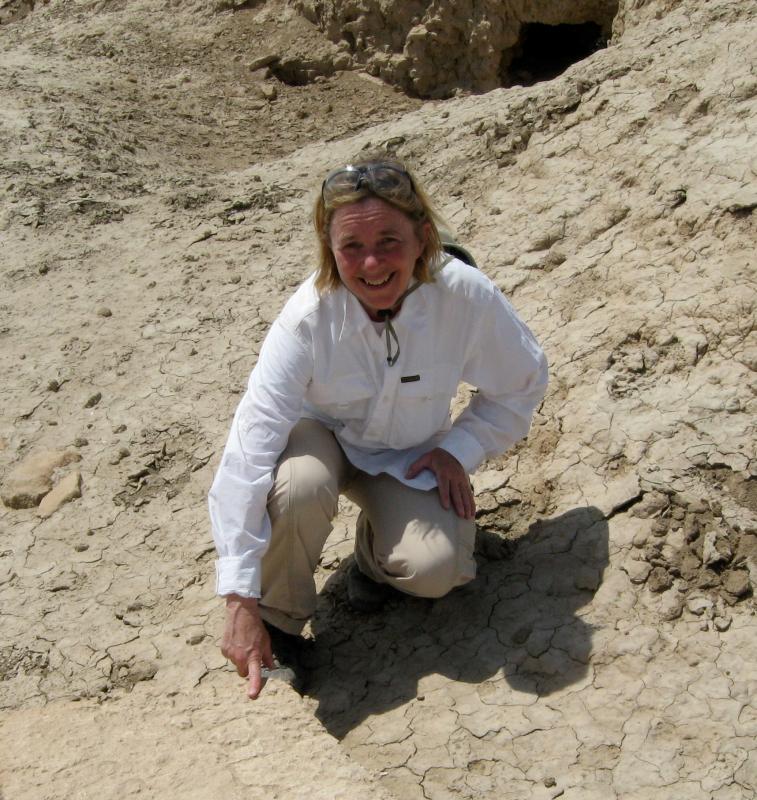Affiliation: Fort Drum and the U.S. Committee of the Blue Shield

Dr. Laurie W. Rush is the Cultural Resources Manager and Army Archaeologist stationed at Fort Drum, NY, and is a Board Member of the U.S. Committee of the Blue Shield. She holds her degrees from Northwestern University (Ph.D. and MA), and Indiana University Bloomington. At Fort Drum she manages cultural property on over 100,000 acres of military land, including nearly 1,000 archaeological sites including five historic villages and over 360 farmsteads lost during the 1941 expansion of the military base; she also manages the LeRay Mansion Historic District. Dr. Rush educates deploying personnel about cultural property protection during military operations, and also specializes in the prehistory of the Northeast and Great Lakes Region, and the local history of Jefferson, Lewis, and St. Lawrence Counties, NY. As Native American Affairs Liaison for the Garrison Commander, she manages all diplomatic relations between the Tenth Mountain Division and federally recognized tribes with ancestral ties to Fort Drum land.
The events of unspeakable destruction emerging from the Middle East are reminding us of the global importance of our shared humanity and heritage. Preservation of cultural property provides opportunities for cross cultural and trans-national dialogue, and archaeologists, museum professionals, and military officers are working together at the national and international level to develop teaching materials and planning resources specifically designed to help members of military forces identify and respect cultural property and the heritage of citizens of host nations. Like it or not, members of fighting forces are often the very people humanity must rely on to save sacred places, historic structures, collections of cultural property such as museums and libraries, and even archaeological sites from the ravages of disaster both natural and man-made. From heritage mapping, to archaeology awareness playing cards, to video games and lectures, this lecture describes teaching methods, preservation accomplishments in conflict and disaster areas, plans for future effort and international cooperation, and the potential implications of these efforts for peace keeping and peace-making.
Short bibliography and/or website on lecture topic:
The best website for this topic is www.cchag.org
Selected readings include:
Charney, Noah 2014 The Real Monuments Men are Even More Heroic, Esquire Magazine, available from http://www.esquire.com/blogs/culture/real-monuments-men
Rush, Laurie W. 2012 “Working with the Military to Protect Archaeological Sites and other Forms of Cultural Property.” Journal of World Archaeology. 44:3, 359-377.
[Laurie Rush (2012): Working with the military to protect archaeological sites and other
forms of cultural property, World Archaeology, 44:3, 359-377
To link to this article: http://dx.doi.org/10.1080/00438243.2012.722035
Rush, Laurie W. 2012 “Cultural Property Protection as a Force Multiplier in Stability Operations; World War II Monuments Officers Lessons Learned” Military Review. March-April, 2012, pp. 36-43.
To link to this article: http://usacac.army.mil/CAC2/MilitaryReview/Archives/English/MilitaryReview_20120430_art008.pdf
The opportunity to intensively study 107,000 acres in the northeastern Great Lakes Region has led to an appreciation of the complexity of indigenous occupation of the American northeast. Beginning with the potential for maritime technology during the earliest occupation of the area, the team at Fort Drum has also uncovered Archaic hearths, Middle Woodland habitations, ceremonial landscapes, earthworks, a contact period trade site, and pathways. The Department of Defense Native American Consultation Program has also provided the Fort Drum archaeology team with the opportunity to invite the descendent populations to assist in understanding and managing these sites, offering a more sophisticated and nuanced understanding of the past than was ever available before. This illustrated lecture will introduce the chronology of human occupation at Fort Drum and will discuss the dynamics of archaeological discovery on an active military base.
Over the past 350 years, Europeans have systematically separated Native Americans of northeastern North America from their places of religious significance and ceremony. Disenfranchisement has taken the form of characterizing sacred places as locations of devil worship; attribution of aboriginal stone architecture to ancient European visitors; failure to appreciate Native American understanding of celestial events, and archaeological identification of aboriginal stone features as farmers’ piles and root cellars. This lecture explores the historic dynamics that have prevented serious identification and study of the ceremonial stone landscapes and features of the northeast and discusses the critical importance of using existing data sets to initiate regionally focused research on these sites. Encouraged by recent revelations of lunar relationships and indigenous architecture in the American Midwest, archaeologists and historians from federal agencies in partnership with representatives from the northeast tribes, are proposing a new model of collaborative research to better understand similar expressions of ancient cosmology. Offering examples of site analysis from New York and New England, the lecture will also introduce a range of new technologies including planetarium sessions; satellite imagery and GIS analysis; archival and linguistic research; and new dating techniques that can be applied to scientifically investigate these misunderstood and mysterious places.
Selected readings include:
Mavor, James and Byron Dix, 1989 Manitou:The Sacred Landscape of New England’s Native Civilization
Toner, Mike 2015 “City of the Moon,” Archaeology Magazine, March/April, pp 40-45.
Lepper, Bradley, T 2002 The Newark Earthworks; A Wonder of the Ancient World, the Ohio Historical Society.